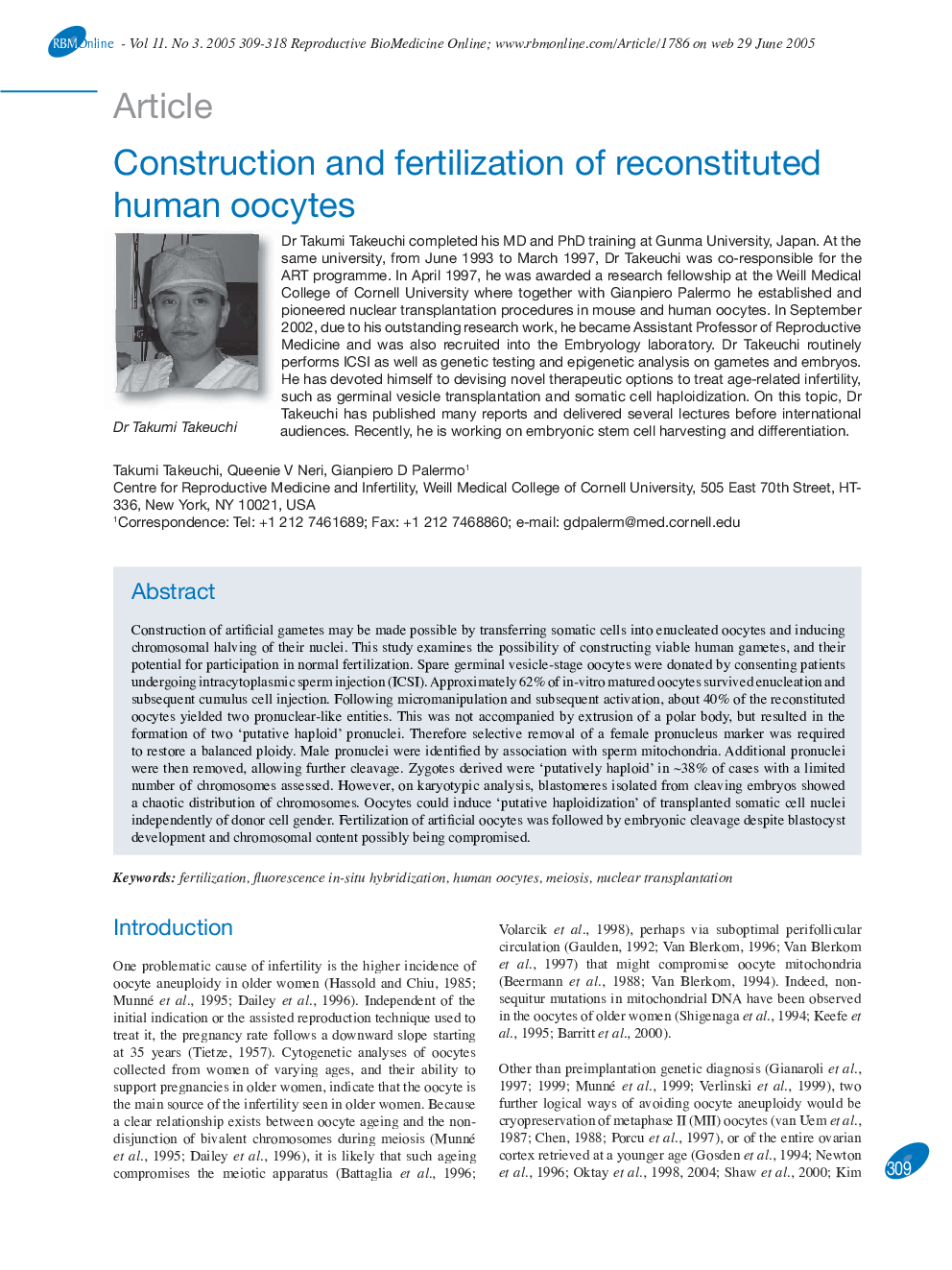| Article ID | Journal | Published Year | Pages | File Type |
|---|---|---|---|---|
| 9334687 | Reproductive BioMedicine Online | 2005 | 10 Pages |
Abstract
Construction of artificial gametes may be made possible by transferring somatic cells into enucleated oocytes and inducing chromosomal halving of their nuclei. This study examines the possibility of constructing viable human gametes, and their potential for participation in normal fertilization. Spare germinal vesicle-stage oocytes were donated by consenting patients undergoing intracytoplasmic sperm injection (ICSI). Approximately 62% of in-vitro matured oocytes survived enucleation and subsequent cumulus cell injection. Following micromanipulation and subsequent activation, about 40% of the reconstituted oocytes yielded two pronuclear-like entities. This was not accompanied by extrusion of a polar body, but resulted in the formation of two 'putative haploid' pronuclei. Therefore selective removal of a female pronucleus marker was required to restore a balanced ploidy. Male pronuclei were identified by association with sperm mitochondria. Additional pronuclei were then removed, allowing further cleavage. Zygotes derived were 'putatively haploid' in ~38% of cases with a limited number of chromosomes assessed. However, on karyotypic analysis, blastomeres isolated from cleaving embryos showed a chaotic distribution of chromosomes. Oocytes could induce 'putative haploidization' of transplanted somatic cell nuclei independently of donor cell gender. Fertilization of artificial oocytes was followed by embryonic cleavage despite blastocyst development and chromosomal content possibly being compromised.
Related Topics
Health Sciences
Medicine and Dentistry
Obstetrics, Gynecology and Women's Health
Authors
Takumi Takeuchi, Queenie V Neri, Gianpiero D Palermo,
